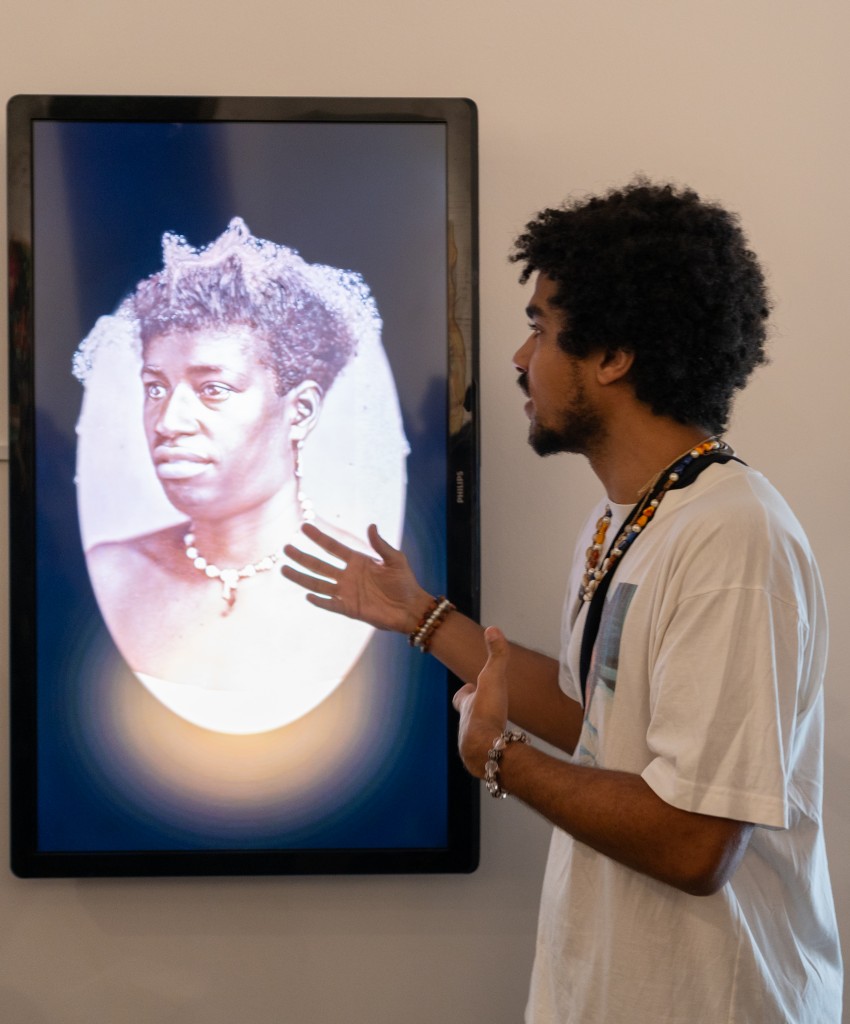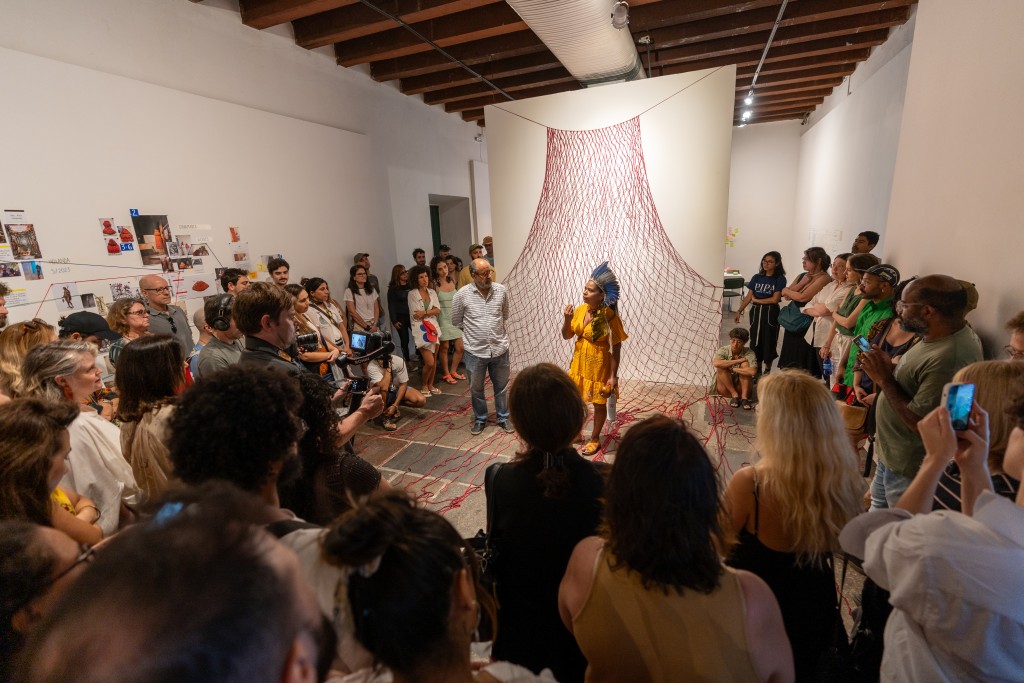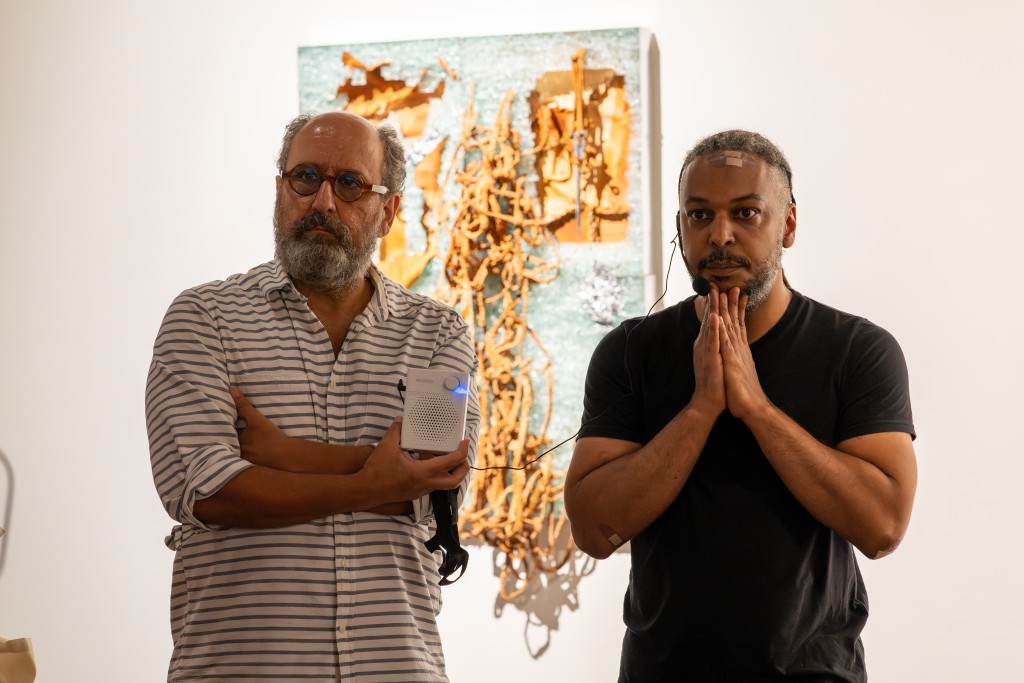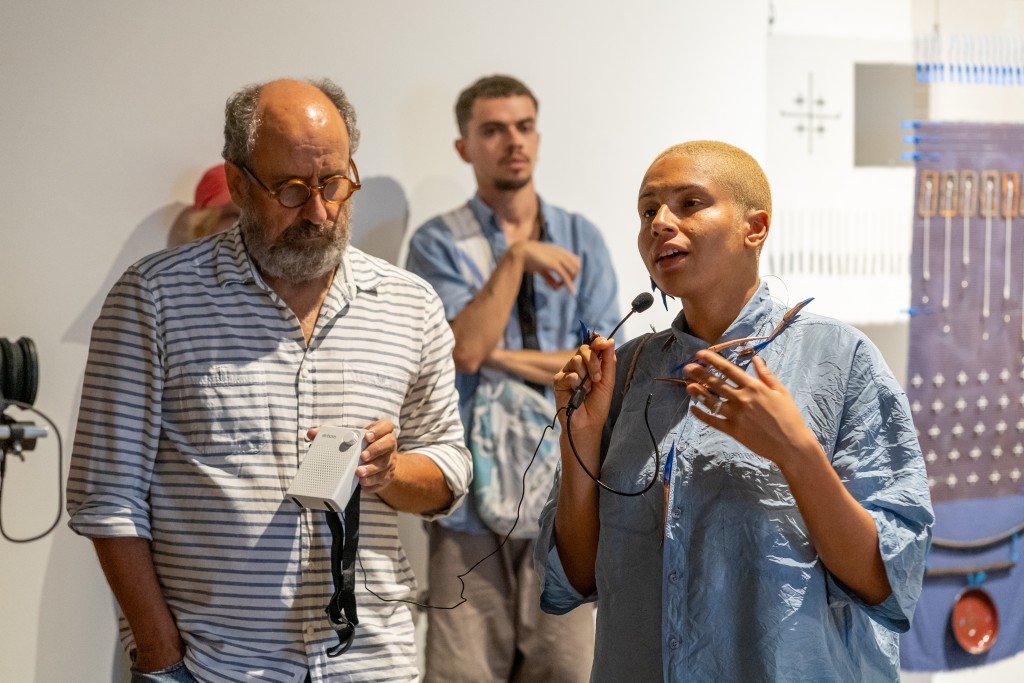Local: Paço Imperial – Rio de Janeiro, RJ, Brazil
Date: Setember 9th to November 12th
On September 9, we held the opening of the Awarded Artists of PIPA 2023: Glicéria Tupinambá, Helô Sanvoy, Iagor Peres and Luana Vitra and the Recent Acquisitions of PIPA Institute exhibitions at Paço Imperial do Rio de Janeiro, both open until November 12.
The Awarded artists’ exhibition is a celebration of the choosing of these four artists as this edition’s awardees, given that, since 2020, the Prize’s group show does not have a competitive aspect. The four of them share Terreiro’s space with juxtaposed artworks, positioned in a way that highlights the possible permeabilities and enhancing their power as a set. Without a rigid expography, they create the space together in a free and fluid way – the exhibition is written by many hands.
As stated by Luiz Camillo Osorio, curator of the PIPA Institute, “The four awarded artists make explicit the plastic strength extracted from dissident bodies and their daily struggles. More than just the conquest of visibility, they fill in with meaning the gaps that once were. Symptomatically, the presence of dance, the body and performance permeates the four poetics”.
At 3pm on Saturday, as part of the opening schedule, Helô Sanvoy carried out his performance “Empelo” in the Praça dos Arcos room, at Paço Imperial. The title refers to being completely naked, a nudity that is adopted during the action, in which the artist, after making an extension of his hair with leather braids (a material understood by him as a living being), positions the braids in a hook on the wall and stretch his body, trying to hold himself up by the hair, with his feet positioned on a small wooden bracket. In attempts to reach the desired position and support his body, Helô uses great force while his hair is pulled, generating tension and discomfort in the audience due to the pain they see the artist feel, without being able to alleviate it. It is even more symbolic that this performance was held in a place with huge historical scars from the violence practiced against the Black enslaved population.
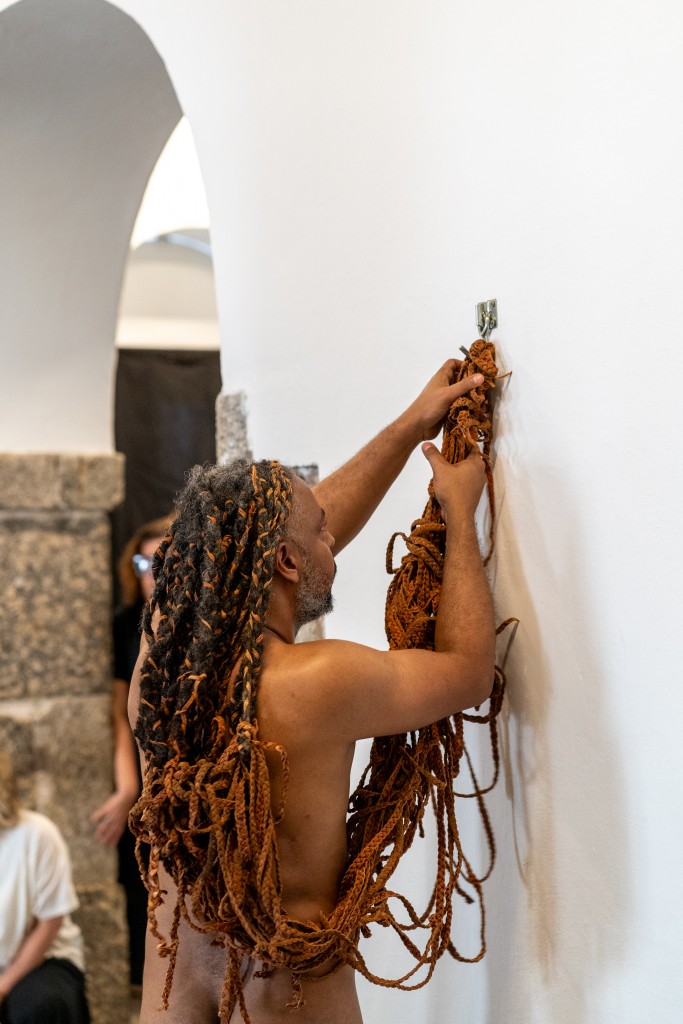
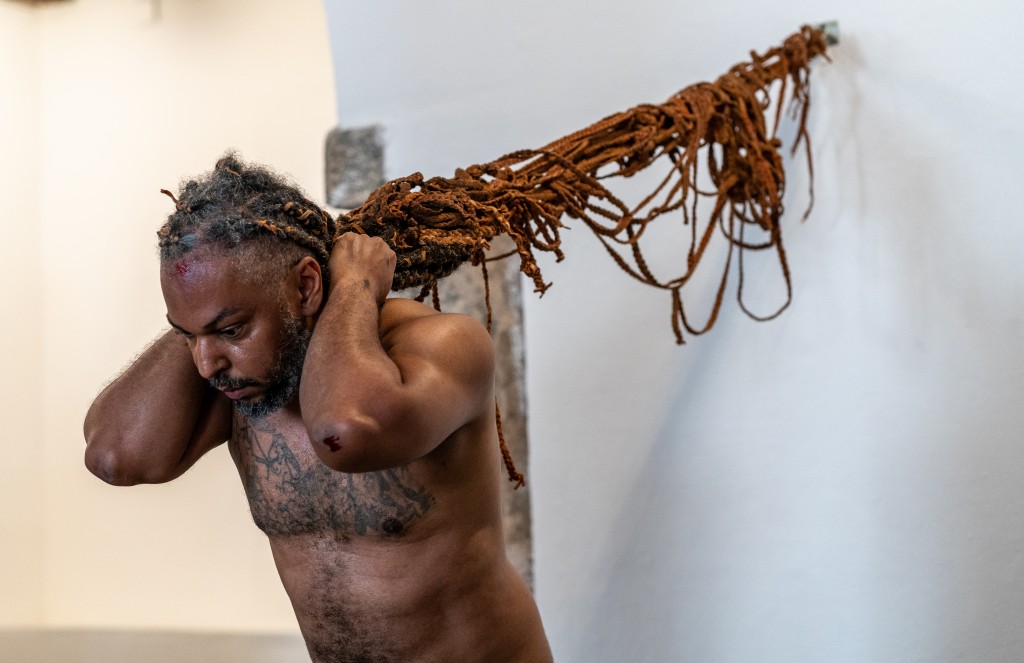
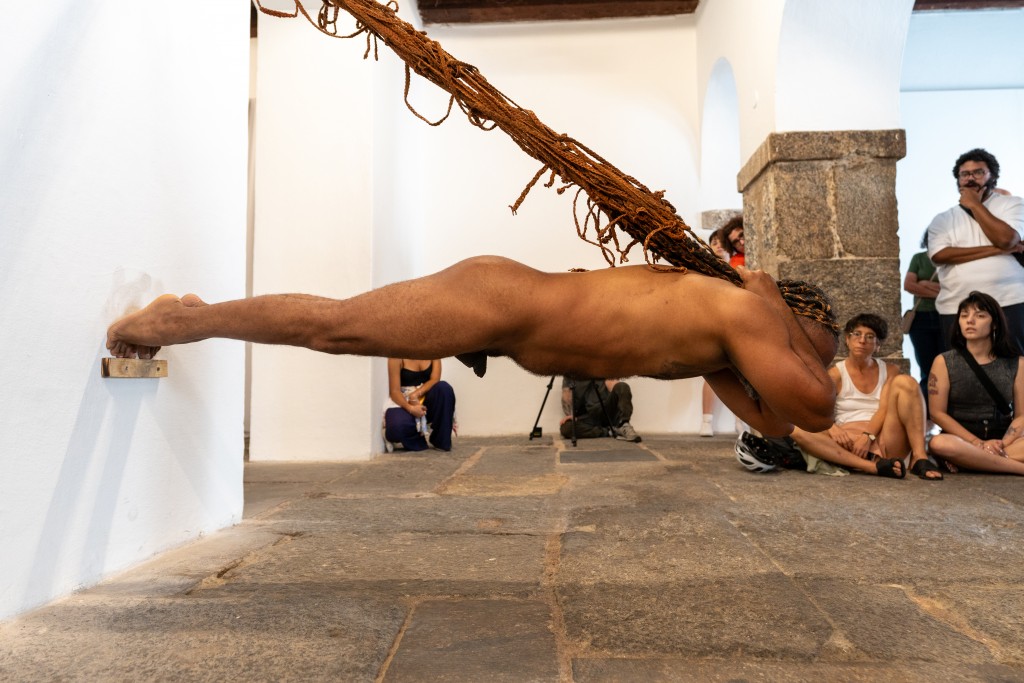
Camillo then carried out a guided tour of the two exhibitions. At Terreirinho, Lucrécia Vinhaes, founder of the PIPA Institute, shared a few words about the history and goals of the Institute and the Prize, and Camillo offered an overview of the selected works, highlighting the different Brazils represented in varied formats, techniques and approaches. These are works by contemporary Brazilian artists that are part of PIPA Prize’s history: Agrade Camíz, Guilherme Bretas, Elias Maroso, Maxwell Alexandre, UÝRA and Xadalu Tupã Jekupé. The visit was also attended by Guilherme Bretas, who spoke to the public about his work “Nossa Pele Reluz como Ouro”, an artificial intelligence animation with a DeepFake of historical portraits taken in the 19th century. The artist explained how technology makes it possible to bring static images to life, in order to humanize people who were photographed under a racist view as part of the “Black Types” series, made by the German Alberto Henschel in the 1860s. The movement brings the viewer closer of the person portrayed, and it also works as a resistance to the static posture required when capturing the other.
In the Terreiro room, alongside Camillo and Lucrécia, Ana Avelar, member of the Prize’s Board, was also present, and commented on the current art scene and the importance of PIPA in supporting this scene and the artists. Next, we were able to hear Glicéria Tupinambá discuss her journey abroad, which culminated in the return of a Tupinambá Mantle from Switzerland. One of the works on display represents exactly the artist’s flow of thought concerning the processes and research involved in recovering the technique of making the Mantle, and also in the historical tracing of its journey, which passed through several European monarchies. Another work, a kind of red net that extends from the top of the wall to the floor, with spread threads, is the structure of the Mantle: the knots involved in its creation. Glicéria highlights the collective character of it, the making of which takes place in the community, with the participation of children, birds, the cosmos and dreams, therefore is the community that signs the Mantle, since the artist considers herself just the hand that helps the Mantle to exist. When speaking to the public, the artist also highlighted the struggle of indigenous peoples for survival, and the importance of these people for environmental preservation.
In his speech, Helô Sanvoy addressed several works, in different media, from his research on Pau-brasil (Brazilwood). In the work “Não Desce pela Garganta”, three gallows located in different areas of the space carried, carved into a piece of wood, data on violence in the country: against young Black people, women and trans people. Another work has dried meat as its base, forming a trough-receptacle, within which materials that were part of the main economic cycles in Brazil are gathered: Brazilwood cycle; Sugarcane cycle; Gold cycle; Cotton cycle; Coffee cycle; and Rubber cycle. Among the other works is an etymological approach to the word “Brazilian” (Brasileiro), linked to the wood extraction process, and a photographic record of the “Empelo” performance, the same work that was performed at the opening.
Luana Vitra presented works from the series “Fio desencapado, isca de confusão”, in which materials such as iron, hook, seal and rope are used, and words in different languages are incorporated. Furthermore, the artist also brought spear-arrows, which formed, with the other works, a space in harmony, built reverberating the same poetics. It is possible to observe, on the whole, some topics that permeate Luana’s way of creating: the understanding of the work as a prayer, as a miracle, and of rusting as a dance of iron, as its way of moving; and also the artist’s interest in traps. Her work is located, as she says, between the idea of patience and violence.
Iagor Peres explained his proposal to bring to the PIPA exhibition a work whose core was invisibility, but which was not a secret. Thus, the artist researched the factors that would make explicit the illusion behind the ideia of space, showing that things are connected: these factors would be the idea of heat, sound and vibration. Elements that walk and propagate in ripples. “Tremor”, then, consists of the installation of a vibrating floor in which the person could arrive in the area without having something so visually marked, without vision establishing the dialogue, but rather constituting a work that happened within the person. In another work brought by the artist, “Espectro I”, Iagor uses solder – a material recognized as something that lives between things – to build what he calls a drawing, entirely composed of solder on solder, revisiting the idea of figure.
In a week in which Rio de Janeiro breathes art, with the ArtRio art fair and several shows around the city, the PIPA exhibitions received a large number of visitors at the opening. Other exhibitions opened at Paço Imperial on the same date: the solo exhibitions by the artists Bruno Miguel, Claudia Jaguaribe and Marcus André. At the end of the day, the public and the artists had a moment of celebration in the central courtyard of the Paço Imperial.
To find out more about the Awarded Artists, visit their pages and follow PIPA’s websites and social media.
All the photos in this post were taken by Fabio Souza.
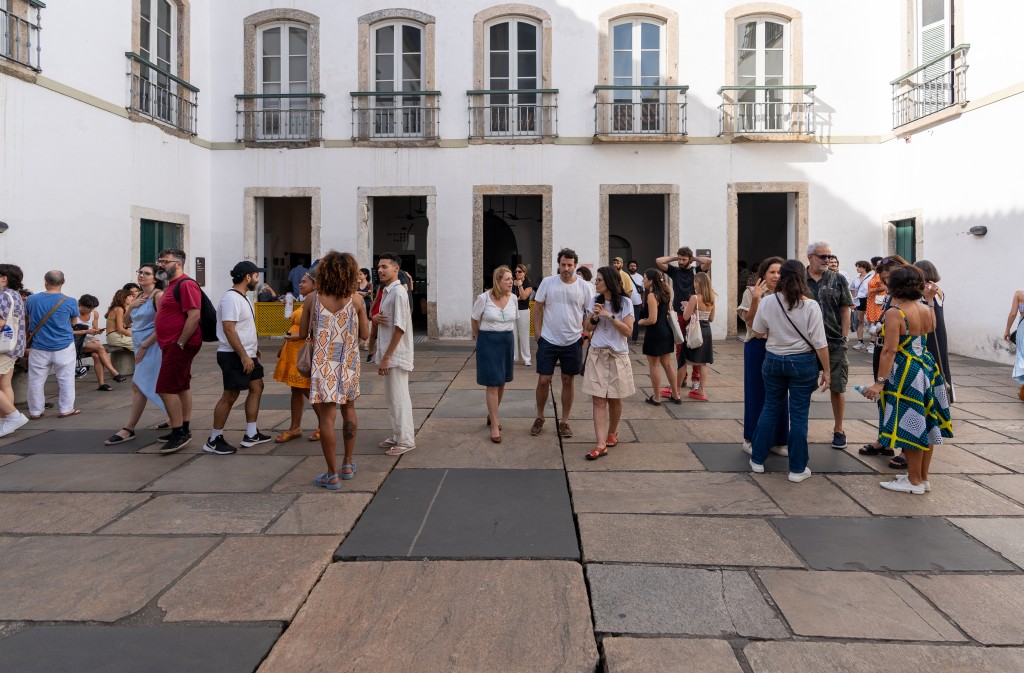
PIPA Prize 2023: Glicéria Tupinambá, Helô Sanvoy, Iagor Peres and Luana Vitra
PIPA Institute: Recent Acquisitions
From September 9 to November 12
Opening: September 9, from 12pm to 6pm
Guided tour with Luiz Camillo Osorio at 3.30pm and a performance by Helô Sanvoy at 3pm
Paço Imperial
Praça XV de Novembro, 48 Centro, Rio de Janeiro, Brazil
From Tuesday to Sunday, das 12h às 18h
Free entrance

